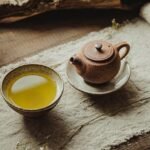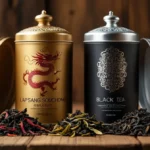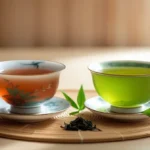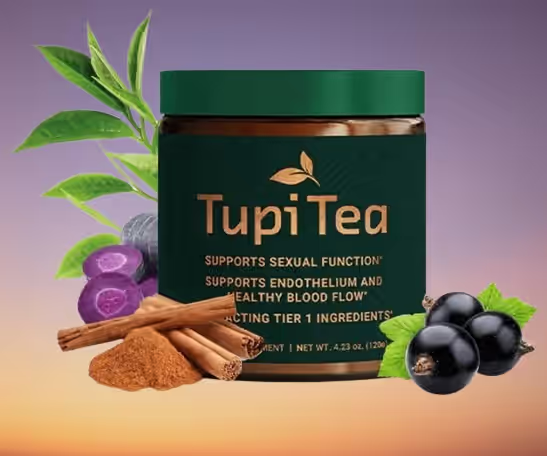Table of Contents
Understanding Korean Tea Culture: A Journey into Heritage and Rituals
The rich and ancient tradition of Korean tea culture is deeply intertwined with the nation’s history, health practices, and social rituals. While many associate tea culture with China and Japan, Korean tea culture has unique and significant attributes that continue to resonate with Koreans today. This article delves into the essence of tea in Korean society, its importance, the varieties Korea is known for, and why Koreans often choose tea over water.
Is Tea Important in Korean Culture?
The Historical Roots of Korean Tea Culture
Tea has been an integral part of Korean culture for centuries, dating back to the Three Kingdoms period (57 BC – 668 AD). Introduced from China, tea quickly gained a prominent role in Korean spiritual and daily life. Buddhist monks initially used tea as part of their meditation practices, seeing it as a way to focus the mind and foster a deep inner calm. Over time, tea drinking spread beyond the monastic community and was embraced by Korean royalty and the general public.
Today, tea remains an essential element of Korean culture, representing more than just a beverage. It serves as a symbol of hospitality, mindfulness, and respect. Koreans often offer tea to guests as a gesture of warmth and kindness, believing that it fosters a sense of harmony and peace. Traditional tea ceremonies, known as “darye,” showcase the graceful and ritualistic way of preparing and serving tea, embodying values of patience, discipline, and respect. The significance of tea extends far beyond its consumption, reflecting Korean values and social etiquette.
Tea and Spirituality in Korea
Tea drinking in Korea is not just about quenching thirst; it is a way to center the mind and connect with oneself. Many Koreans view the process of tea-making as a form of meditation, allowing them to relax, slow down, and be present in the moment. Korean temples often host tea ceremonies, where the ritual of preparing and consuming tea serves as a path to self-reflection and mental clarity.
What Tea is Korea Famous For?
Korea is famous for its unique varieties of tea, each with distinct flavors, aromas, and health benefits. Here are some popular teas that define Korean tea culture:
1. Green Tea (Nokcha)
Green tea, or Nokcha, is one of the most popular and well-known teas in Korea. Renowned for its grassy, refreshing taste, green tea has been enjoyed in Korea for centuries and is typically cultivated in the lush, misty mountains of Boseong. Known for its high antioxidant content, Nokcha is celebrated for its potential health benefits, including improved metabolism, detoxification, and a rich supply of vitamins and minerals. Each spring, green tea festivals are held in Boseong, attracting tea lovers worldwide to experience the fresh harvest and witness traditional tea-making.
👉 Awaken Your Day with Premium Korean Nokcha! 👈
2. Barley Tea (Bori-cha)
Bori-cha is a common tea enjoyed by many Koreans daily, often served as a replacement for water. Brewed from roasted barley grains, Bori-cha has a toasty, nutty flavor and is often served cold in summer and warm in winter. Its popularity stems not only from its taste but also from its perceived health benefits, including aiding digestion and improving circulation. Bori-cha is commonly served in Korean households and restaurants as a staple beverage, making it a fundamental part of Korean tea culture.
👉 Korea’s Top Wellness Brew – Try Barley Tea Today! 👈
3. Omija Tea
Omija tea, made from the Omija berry, translates to “five-flavor berry tea.” This unique tea is known for its combination of sweet, sour, salty, bitter, and spicy flavors. Often enjoyed as a cool beverage during summer, Omija tea is not only refreshing but is also believed to have antioxidant and liver-cleansing properties. Traditionally, it was consumed by royal families and upper classes, and today it remains a popular health drink among Koreans.
👉 Taste the Balance of Nature – Sip Omija Today! 👈
4. Jujube Tea (Daechu-cha)
Jujube tea, or Daechu-cha, is made from dried jujube fruits, which are known for their sweet and mildly tangy flavor. This tea is traditionally consumed for its calming effects, believed to reduce stress and promote better sleep. Many Koreans drink Jujube tea during the colder months, as it is known to boost the immune system and provide warmth. Daechu-cha is often sweetened with honey and ginger, making it a comforting drink that embodies the essence of Korean tea culture.
👉 Pure Herbal Goodness – Sip Korean Jujube Tea! 👈
5. Ginger Tea (Saenggang-cha)
Ginger tea, or Saenggang-cha, is a traditional Korean tea popular for its warming properties, especially during winter. Made by boiling fresh ginger and often sweetened with honey, Saenggang-cha is a go-to remedy for colds and sore throats. This tea has a slightly spicy taste and is commonly enjoyed by Koreans looking for a natural way to boost immunity and relieve inflammation.
👉 Top Herbal Defense – Discover Korean Ginger Tea! 👈
Why Do Koreans Drink Tea Instead of Water?
Health Benefits and Medicinal Properties
One primary reason Koreans drink tea instead of water is the health benefits that many traditional teas provide. For example, barley tea (Bori-cha) and corn tea (Oksusu-cha) are known for their digestive benefits and are regularly consumed as alternatives to plain water. Koreans have long recognized that teas infused with natural ingredients can help regulate the body’s systems, soothe digestion, and improve circulation.
Cultural Preferences and Traditions
Drinking tea instead of water also has cultural roots. Offering tea rather than water to guests is seen as a way of showing hospitality, with tea being a symbol of warmth and welcome. Many Korean households and restaurants automatically serve tea as the main beverage, often without needing to ask. This tradition dates back to a time when tea was more readily available than purified water, cementing tea’s role as a daily drink in Korean society.
Additionally, many Koreans believe that drinking tea, especially herbal and grain teas, adds subtle flavors to meals, making dining a more enjoyable experience. Bori-cha, in particular, has a mild, roasted flavor that complements Korean cuisine well, enhancing rather than overpowering the taste of food.
The Modern Influence of Korean Tea Culture
In modern Korea, tea culture continues to thrive, with traditional tea houses scattered throughout cities, offering locals and tourists alike a chance to experience Korean tea rituals. These tea houses, or “tabangs,” are designed to provide a tranquil escape from the busy city life. Many of them serve not only traditional teas but also fusion drinks that blend traditional flavors with modern twists, such as green tea lattes and matcha-based desserts.
Furthermore, with a global emphasis on wellness, Korean teas have gained popularity for their natural health benefits. Many people around the world now turn to Korean teas for their antioxidant properties and natural flavors, which add to the appeal of this ancient culture.
Final Thoughts on Korean Tea Culture
Korean tea culture reflects the values and history of Korea, embodying health, hospitality, and harmony. Koreans’ relationship with tea goes beyond mere consumption; it is a part of their heritage that connects them to past traditions and continues to influence social customs and well-being. Whether it’s the health benefits, the calming influence, or the distinctive flavors, tea plays a unique and irreplaceable role in Korean life, offering insights into the Korean way of life for those who partake in the experience.
For anyone interested in exploring Korean tea culture, trying traditional teas like Nokcha, Bori-cha, or Daechu-cha offers a taste of Korea’s cultural legacy and a moment to pause, reflect, and appreciate the simpler aspects of life.













